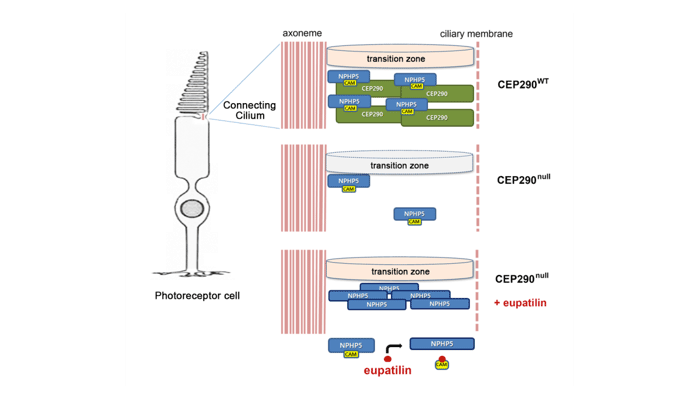Professor Joon Kim and graduate student Yong Joon Kim of the Graduate School of Medicine Science & Engineering identified a candidate chemical compound for the development of genetic disorder therapeutics.
Ciliopathies are a group of intractable genetic disorders caused by mutations in genes that are essential for the formation of cellular organelles called cilia. Common symptoms of ciliopathies are brain malformation, retinal photoreceptor degeneration, and kidney dysfunction. The results of this study are expected to provide the basis for the development of small molecule drugs for ciliopathies.
Human genetic studies have identified a number of causative mutations in ciliopathy patients. However, no drugs have been developed to treat ciliopathies. To solve this problem, this study searched for candidate molecules for ciliopathy drug development. First, the researchers established a cell line model that mimics the CEP290 gene mutation, which is one of the frequent causes of ciliopathies, by using the CRISPR/Cas9 system, and then used a compound library screening technique to identify small chemical compounds capable of overcoming ciliary defects caused by CEP290 loss.
The plant flavonoid eupatilin was discovered by the screen. Eupatilin was found to be complexed with the calmodulin protein, and to act on the NPHP5 protein, which is involved in ciliary formation as a binding partner of CEP290. NPHP5 failed to properly localize to the ciliary base in cells without CEP290 function. Notably, eupatilin normalized the localization of NPHP5 and restored some of the functions that the CEP290-NPHP5 complex was responsible for. The researchers injected eupatilin into a mouse model of the CEP290-related ciliopathy, and demonstrated that eupatilin is effective in delaying retinal degeneration. These results are summarized in Figure 1.
This study was published in the August 1 issue of the Journal of Clinical Investigation, (Title: Eupatilin rescues ciliary transition zone defects to ameliorate ciliopathy-related phenotypes).

Joon Kim (Graduate School of Medical Science & Engineering)
E-mail: joonkim@kaist.ac.kr






